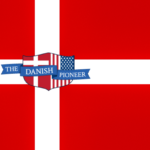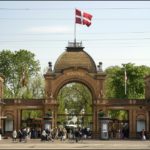
Book Review: H.C. Andersen’s Biography
Okay, a show of hands: How many of you actually have read the autobiography of Danish author, fairy tale writer, and poet Hans Christian Andersen (1805-1875)? Just as I thought. No? Sigh. Okay readers, your assignment is to read, The Fairy Tale of My Life: An Autobiography by Hans Christian Andersen, Cooper Square Press, 569 pages. Most of us know about Denmark’s greatest literary giant, Andersen, and his fairy tales. But have you read his autobiography? His autobiography was originally published in 1871, four years before Andersen’s death. Not by a Danish publishing house but by a British one. Paddington Press in London. London was one of the world’s leading book publishing centers at the time and Andersen became a literary celebrity in this British city. Andersen’s writing style is dated, laborious at times, in his attempt to convey thoughts or feelings when only a few words would have been better. However, that is the beauty of reading an author of another time. When there was no cell phone or Internet to interrupt your reading an engaging book about a person like Andersen. From a boy growing up in Odense, struggling to find his life’s purpose in Copenhagen, to becoming a celebrated writer of his day. Sometimes, Andersen’s words are like a slow-moving river: you have to drink in the words to get their full meaning. But they are well worth the effort. He relied on the Deity and Divine Providence, went from object poverty to living comfortably (but never owned a home) from his writings as well as later in life from a pension from none other than the king of Denmark.
It would be unfair really to call this piece a book review. The autobiography hasn’t been entirely read as this writer has been jumping around as the mood suits him. Like when he wrote about coming to Copenhagen in Sept. 1819 as a 14-year-old lad from Odense. He doesn’t mention the name of the first place he stayed at in his autobiography (which lead this reader to wonder what else he chose to leave out of the book, intentionally or unintentionally). I found out from a Danish friend that Andersen checked into Gardengarden Inn after arriving in Copenhagen. Today, you can visit the spot, but not the building, as it was torn down long ago. In its place is Heidi’s Bier Hus, located at 18 Vestergade in central Copenhagen. In a city that reveres this famous author, I was surprised a sign wasn’t posted to mark the spot that H.C. Andersen once lived here. Andersen was crushed when he was turned down for the Royal Danish Ballet, later by the theatre, easily his first love of life. His later successes would come out of these disappointments by turning to writing. Today, most of us know about Andersen. Danny Kaye’s portrayal of Andersen in the 1952 movie, Hans Christian Andersen, established the image of a happy-go-lucky Andersen that continues today. There is even a website dedicated to where he was and what he was doing for most of his life. In his autobiography, we get to read Andersen’s actual words as if you were with him at the time. From the numerous people he met, locations in and around Copenhagen, to various foreign places. Andersen contemporary, Danish philosopher, theologian, poet and social critic Søren Kirkegaard (1813-1855), never traveled far from his Copenhagen apartment, but his ideas traveled beyond Denmark. By comparison, Andersen loved traveling and meeting people. His words mostly through his fairy tales have traveling far beyond Denmark’s borders as well. Read Andersen’s biography and go with him in his own words. Find out how people and incidences shaped the foundations for his numerous fairy tales. It may even inspire you to reading them. For the first time. Or once again.








